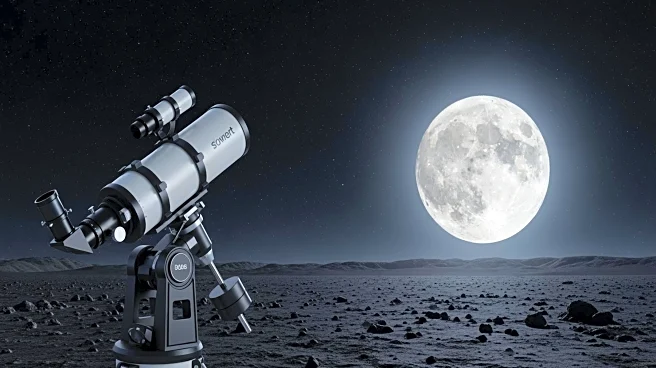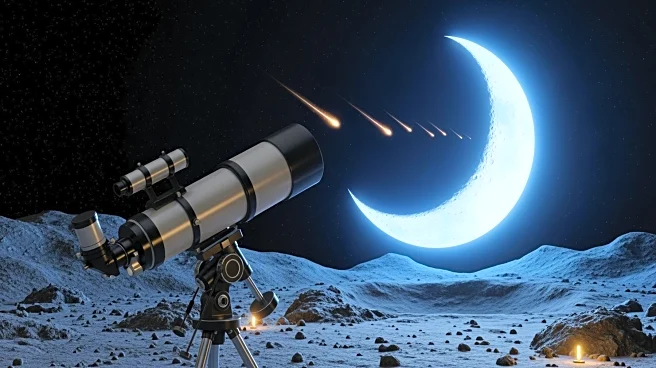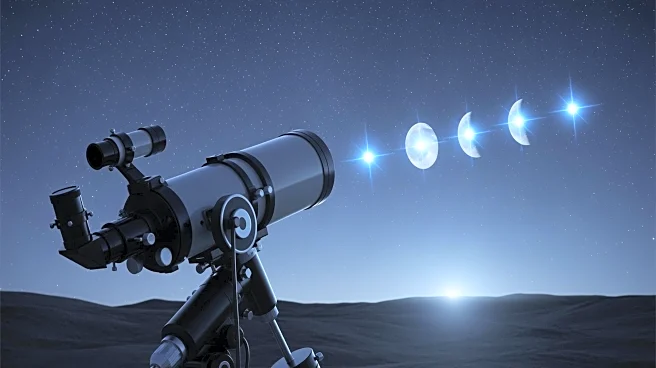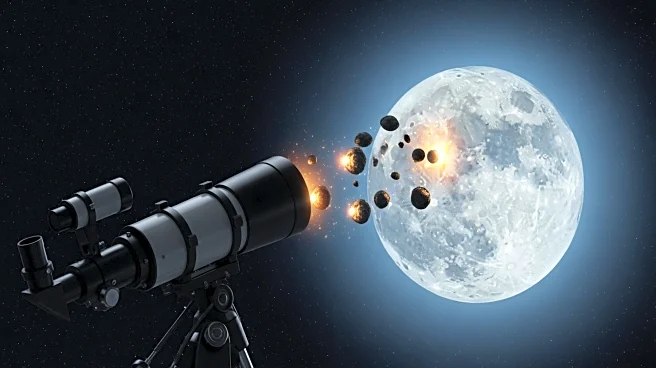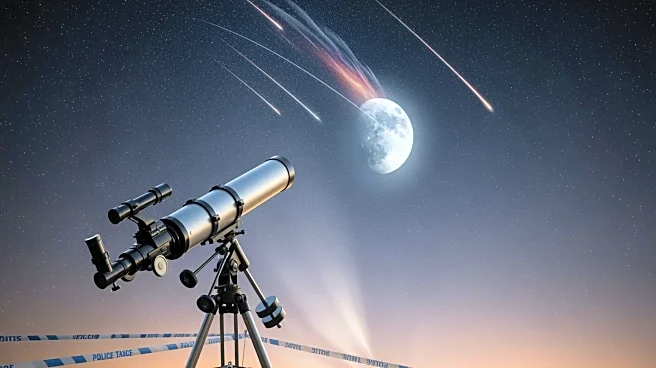What's Happening?
Daichi Fujii, the curator of the Hiratsuka City Museum in Japan, captured two lunar impacts on October 30 and November 1, using an 8-inch telescope. These impacts were recorded as flashes of light on the moon's
surface, caused by asteroids striking the moon. Fujii shared the videos on his social media account, highlighting the first impact's potential connection to debris from the Taurid meteor shower. The asteroids hit the moon at high speeds, with the first estimated to weigh less than half a pound and travel at 60,000 miles per hour. Unlike Earth, the moon lacks an atmosphere, allowing asteroids to strike its surface directly, creating visible flashes.
Why It's Important?
The documentation of lunar impacts is significant for future lunar exploration and habitation. Understanding the frequency and energy of these impacts can inform the design and protection of potential lunar bases. As space agencies plan for human outposts on the moon, data on asteroid impacts will be crucial for ensuring the safety and sustainability of such endeavors. Fujii's work contributes to the scientific community's understanding of lunar surface interactions, which could have implications for both scientific research and practical applications in space exploration.
What's Next?
Continued monitoring and documentation of lunar impacts will provide valuable data for space agencies and researchers. This information could influence the planning and construction of lunar bases, ensuring they are built to withstand potential asteroid impacts. As interest in lunar exploration grows, collaborations between scientists and space agencies may increase to further study these phenomena and develop strategies for mitigating risks associated with lunar habitation.
Beyond the Headlines
The study of lunar impacts also offers insights into the broader dynamics of our solar system. By understanding how and when asteroids impact the moon, scientists can learn more about the behavior of meteors and asteroids in space. This knowledge could contribute to planetary defense strategies, helping to predict and potentially prevent asteroid impacts on Earth.
